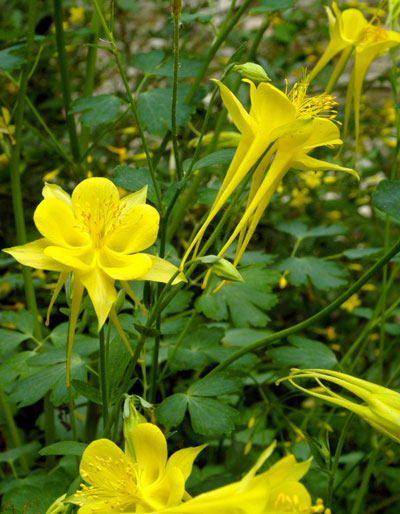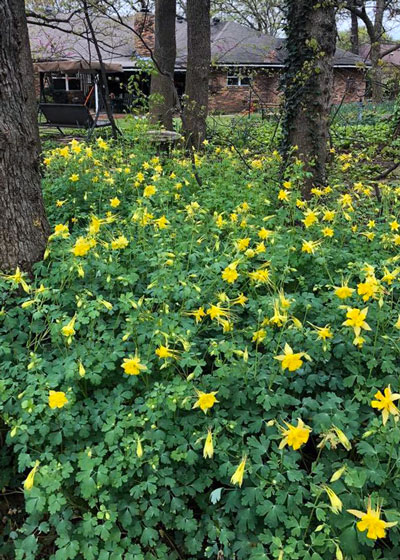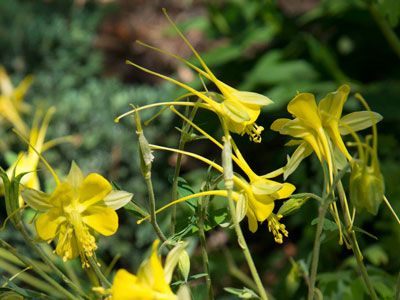Plant of the Week: May 7, 2020
If you’ve never met ‘Texas Gold’ columbine, let me introduce you right now. You’ve been missing a really good partnership. It’s perhaps my favorite shade-loving flowering perennial. We don’t have very many, but even if we did, this one would still rate at the top.

Greg Grant brought this plant to public attention 30-ish years ago. He and his co-hort of long standing, Dr. Jerry Parsons, retired after a renowned career with the Extension Service in San Antonio, did the research and purified the stock. Our mutual friend Dr. Steve George, Extension horticulturist from Dallas (the originator of ‘EarthKind® Roses), brought me my first trial plants, and ‘Texas Gold’ columbine was off to the races.

How the plant came about…
At this point I want to let Greg tell the whole story about how he “found” and developed ‘Texas Gold’ columbine. It’s very different from what I expected, and I’m glad to let him have the chance to tell it in his own words – the words of Greg Grant. Click through to read them.
What you need to know to succeed…
These are my observations based on a quarter-century of growing this beauty. Your experiences may prove to be slightly different, but they’re almost sure to be good.
• ‘Texas Gold’ columbine is a short-lived perennial (2-3 years), but it reseeds itself freely.
• It needs rich, consistently moist garden soil.
• Plant it in shade or early morning sun with afternoon shade. Think of what you’d give hostas, ferns, summer phlox, hellebores, ajuga and oxalis and it will do well right alongside them.

• Its foliage is handsome blue-green, showing up in late fall and early each spring, then gradually dying back a month or two after the plants finish blooming. Spider mites may show up at that same time, but they’re really no big problem because the plants go essentially dormant by then anyway.
• Mulch your beds with compost or shredded tree leaves. As seedlings emerge you can easily dig them out and replant them. Leave some in place to fill in for the next year.
Oh, and lest you wonder why I refer to Greg as “premier Texas plant man,” take a look at the plants he’s brought into our lives. I couldn’t find a listing anywhere else than from this nursery in Louisiana who realizes the very significant impact he’s made on horticulture in Texas and beyond. They have devoted an entire page of their website to “Greg Grant Introductions!” Hooray for them.
